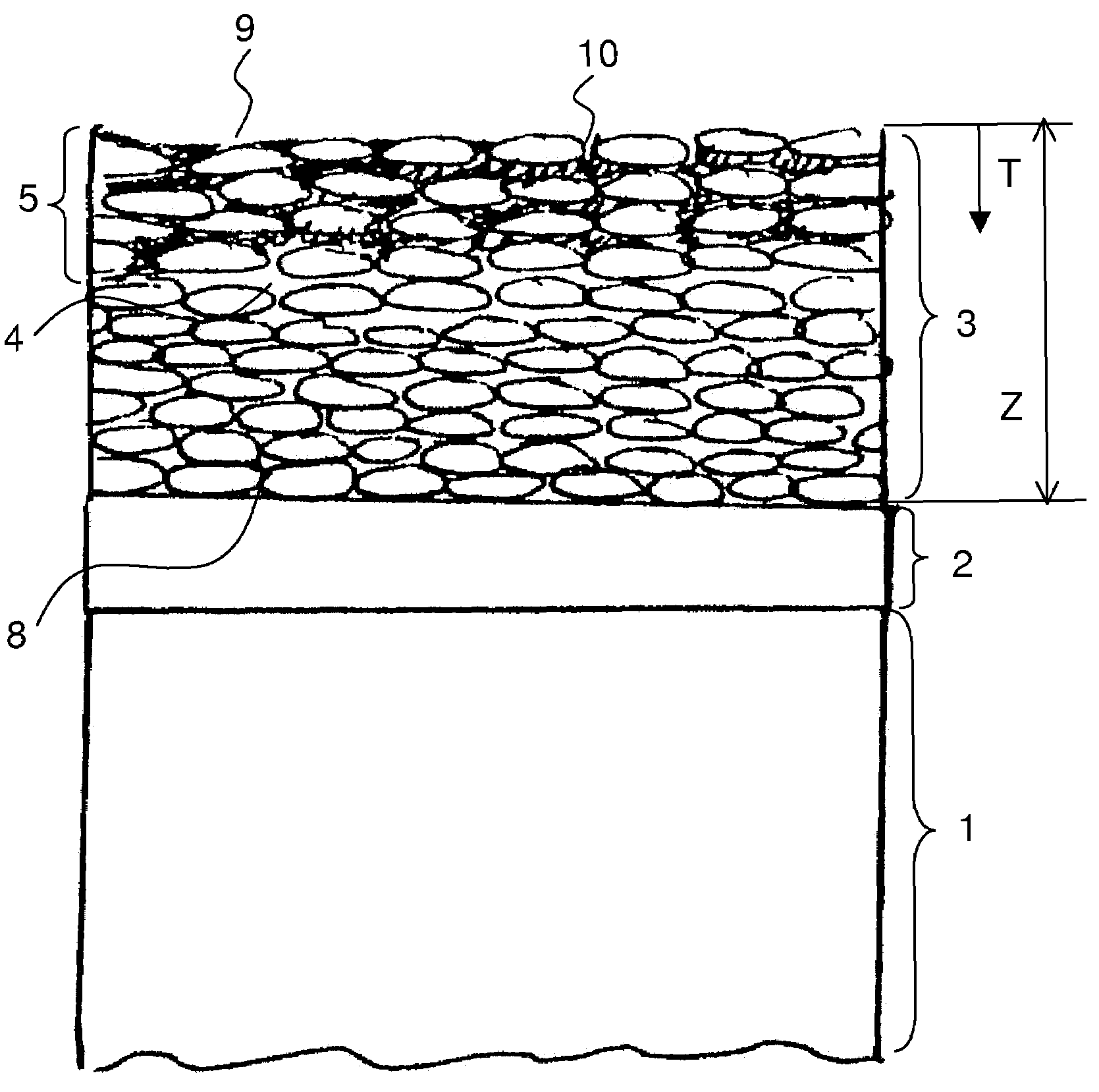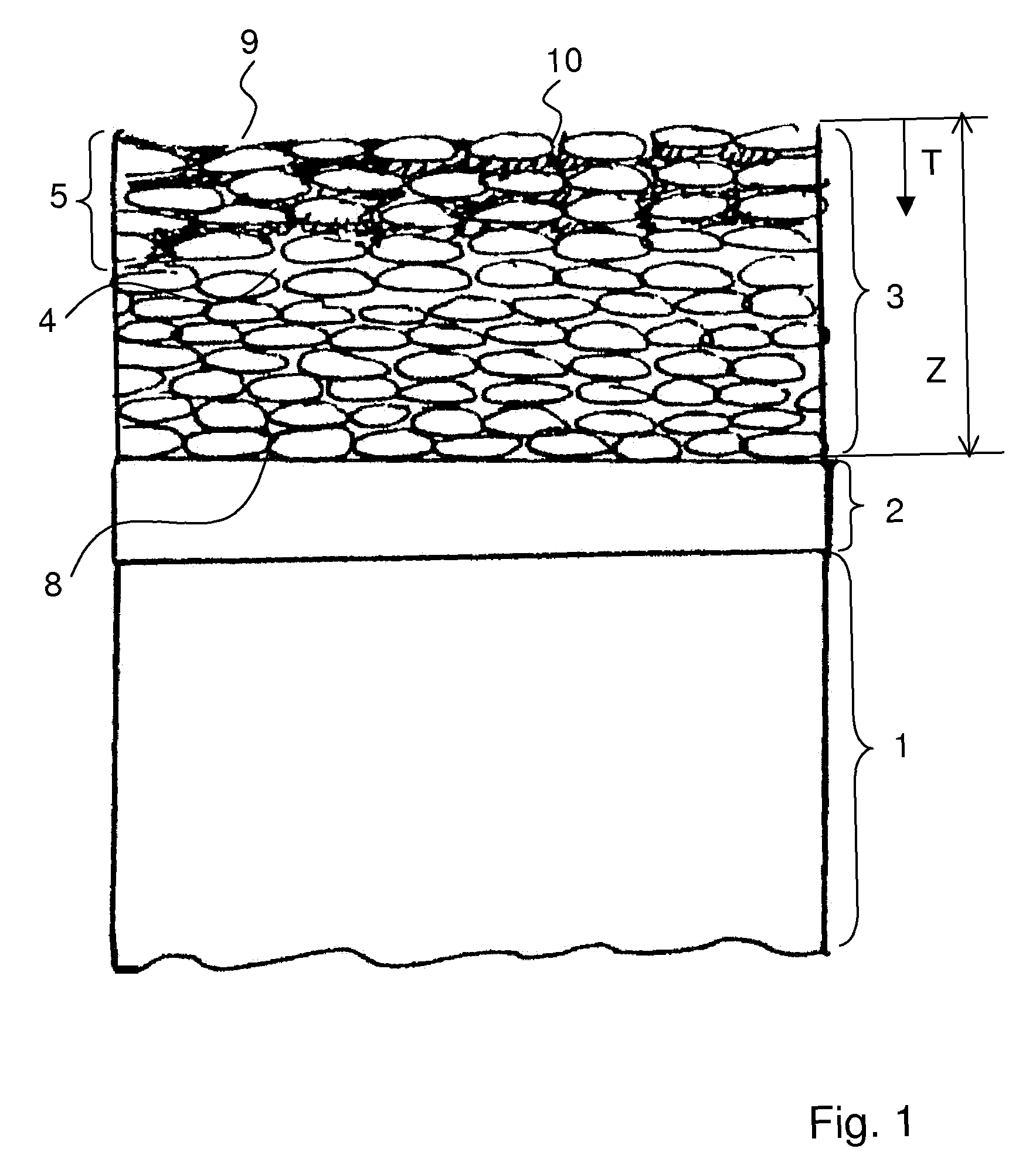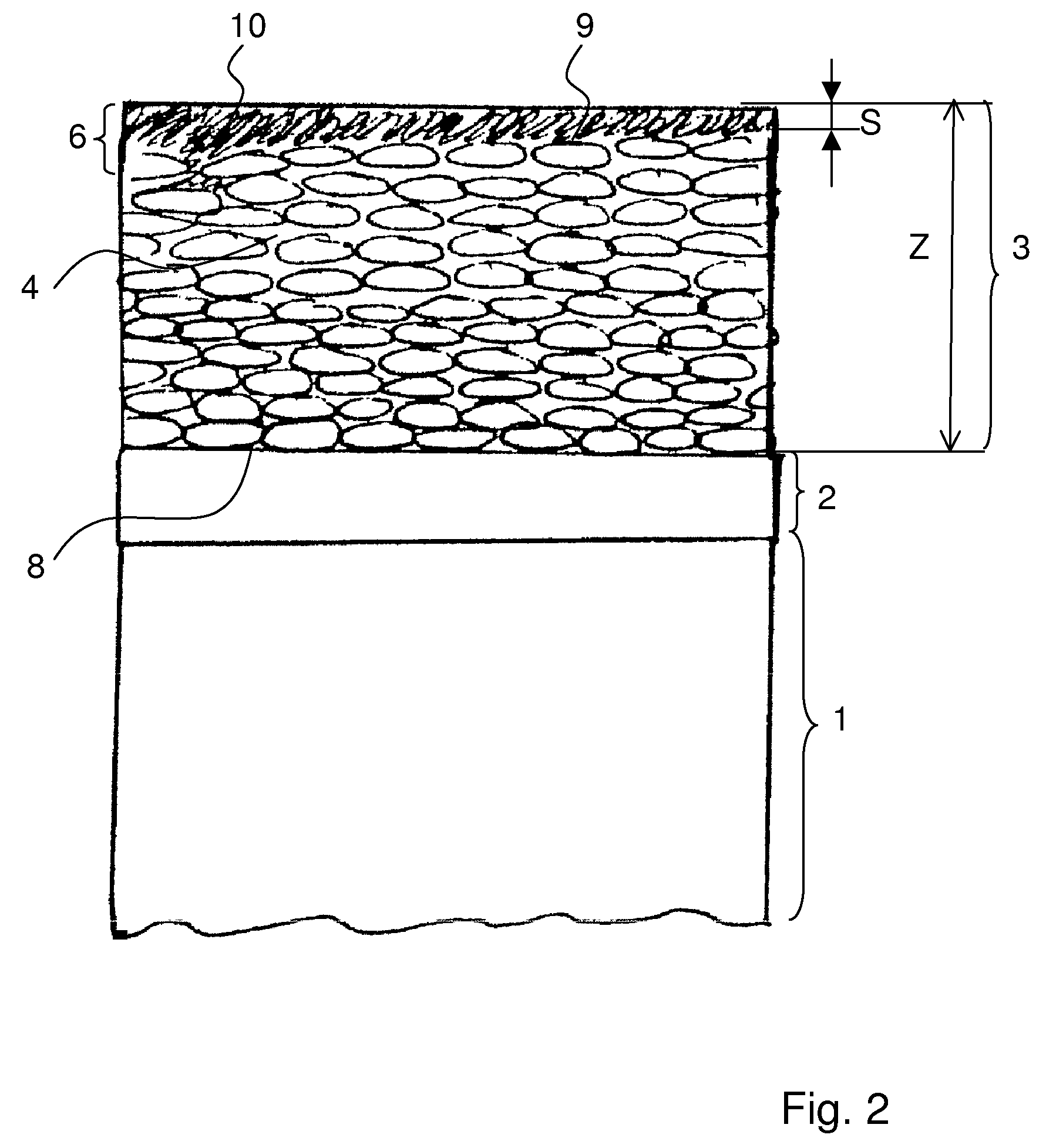Methods for the protection of a thermal barrier coating system and methods for the renewal of such a protection
a technology of thermal barrier coating and protection method, which is applied in the direction of steam regeneration, non-positive displacement fluid engine, liquid fuel engine components, etc., can solve the problems of contaminants infiltrating pores, inducing mechanical stress, and affecting the lifetime of the tbc system, so as to improve the protection of the thermal barrier coating system
- Summary
- Abstract
- Description
- Claims
- Application Information
AI Technical Summary
Benefits of technology
Problems solved by technology
Method used
Image
Examples
first embodiment
[0087]FIG. 1 shows a thermal barrier coating system to which the proposed method has been applied.
[0088]During a washing cycle, after the turbine washing using conventional liquid for the washing, a sealing substance is applied to the thermal barrier coating 3. For the application of the sealing substance, the conventional washing equipment of the engine is preferably used for the introduction of the liquid substance into the hot gas path of the engine. Thus, the sealing substance partially infiltrates into the porous structure 4 of the thermal barrier coating 3 and remains within pores of the porous structure 4. This is shown in the drawing figure by the infiltrated area 5. Another part forms a layer on top of the thermal barrier coating. The sealing substance in this way provides an essentially impermeable layer 10 within and on the thermal barrier coating 3.
[0089]Typically, not the whole thickness Z of the thermal barrier coating layer is infiltrated by the sealing substance, but...
second embodiment
[0100]In the second embodiment the sealing or reactive substance which provides the impermeable layer 10 is applied such that it only marginally infiltrates the pores 4 adjacent to the upper surface 9 in order to provide a top coat 6 as an impermeable layer, i.e., a physical or chemical barrier. The substance can also be chemically reactive with the contaminants, forming a chemical barrier. The top layer 6 is substantially arranged on the upper surface 9 such that it extends over the upper surface 9 and only partly into the thermal barrier coating 3. Preferably in this case the top layer 6 forms a continuous layer completely covering the relevant surface of the thermal barrier coating layer.
[0101]The measure by which the sealing and / or reactive substances extend over the upper surface 9 (layer thickness essentially formed by sealing substance only) is illustrated by reference sign S. Preferably S is between 2% and 25%, in particular between 2% and 15%, of the thickness Z of the ther...
fourth embodiment
[0105]FIG. 4 shows the present invention. In this embodiment the reactive substances 7 are anchored at the surface of the TBC and provide a chemical barrier to contaminants. The reactive substances are applied to the thermal barrier coating in essentially the same manner as described above.
[0106]The reactive substances are chosen such that they are reactive versus contaminants, in particular versus contaminants from crude or heavy oils and are able to immobilize them, preventing their penetration into the thermal barrier coating layer.
[0107]As the protective species are reactive they should be renewed frequently before the end of an operational interval.
[0108]The further embodiments as given in FIG. 5-7 essentially result from a combination of the first three embodiment as illustrated in FIGS. 1-3 with an anchoring of reactive species on the surface of the layer in accordance with the embodiment as illustrated in FIG. 4. These embodiments serve to show that the different possibiliti...
PUM
| Property | Measurement | Unit |
|---|---|---|
| temperature | aaaaa | aaaaa |
| viscosity | aaaaa | aaaaa |
| viscosity | aaaaa | aaaaa |
Abstract
Description
Claims
Application Information
 Login to View More
Login to View More - R&D
- Intellectual Property
- Life Sciences
- Materials
- Tech Scout
- Unparalleled Data Quality
- Higher Quality Content
- 60% Fewer Hallucinations
Browse by: Latest US Patents, China's latest patents, Technical Efficacy Thesaurus, Application Domain, Technology Topic, Popular Technical Reports.
© 2025 PatSnap. All rights reserved.Legal|Privacy policy|Modern Slavery Act Transparency Statement|Sitemap|About US| Contact US: help@patsnap.com



